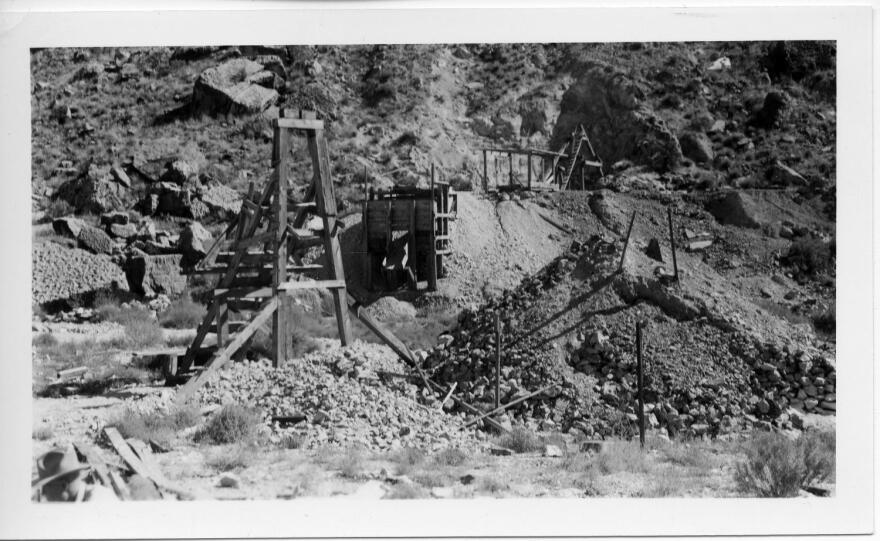In the boom years, things were different. There was a sense of patriotism in the air as prospectors fanned out across remote corners of the Colorado Plateau in search of uranium. They didn’t worry about the price of ore then. The Atomic Energy Commission had set up uranium-buying stations throughout the Southwest. The government snapped up the ore and poured it into a nuclear weapons program. By the mid-1960s, the U.S. had built about 30,000 nuclear warheads.
“We had more than enough for all the bombs that anybody could ever think of making. That was the beginning of the end of the government purchase,” said Paul Robinson of the Southwest Research and Information Center.
So the government shuttered its buying stations. The price of uranium was set by the international market.
“By ’71 uranium was a wholly commercial commodity. No more government purchase,” Robinson said.
Uranium mining has shifted from small-time prospectors to multinational companies, and for a time, these companies thought that nuclear power plants would support the price of ore. But the nuclear power bonanza never materialized.
U.S. companies have struggled in this market.
“Really, really, the downfall of nuclear power is cost,” said Sharon Squassoni, a researcher who studies nuclear nonproliferation at the George Washington University.

The Cold War carried a legacy of environmental damage, particularly on the Navajo Nation, where workers were paid minimum wage or less. And they were not told about the risks of uranium exposure. Today there are more than 500 abandoned uranium mines on the reservation.
Mining practices have changed since then, and a number of protections have been put in place. Safety and environmental concerns might force countries to be more cautious about nuclear power, but they haven't really changed the demand for uranium — the driving factor is still cost.
“Nuclear power is just not a cheap way to boil water,” Squassoni said.
A little more than a decade ago the price of uranium rose, which led to a flurry of claims on the Arizona Strip — thousands of them. In 2011, Congressman Raul Grijalva testified in Congressional hearings that hundreds of those claims were owned by a Russian company. Interior Secretary Ken Salazar called for a 20-year halt to new mines in the Grand Canyon area. The price dropped again, and it hasn’t gone up. The number of claims on the Strip is now hundreds, not thousands.

“There’s a glut on the market, and that glut is not going to go away for a while.”
There aren’t many companies producing uranium in the U.S. today. One of them, Energy Fuels Inc., is a Canadian-based firm with claims in Arizona. Curtis Moore, a spokesman for Energy Fuels, says that the push for clean energy will eventually lead to higher demand for uranium.
“It’s not there yet but it’s definitely getting better, and I think that there’s countries around the world that are definitely embracing nuclear power because of concerns about climate change and global warming,” Moore said.
He said one reason that prices are low is that the international market is not a level playing field.
“You have countries like Russia and China out there subsidizing their industries,” Moore said.
Since 2008, the industry has spent nearly $3 million dollars on lobbyists, and in 2018, it petitioned the federal government for relief. Ordinarily, that might be a tough sell, but this was during the Trump administration. Tucked into last year’s budget was a $75 million dollar fund to buy uranium.
“The government guarantees you that they will buy it from you. So for them it’s an incentive,” Grijalva said.
Grijalva has introduced legislation to stop uranium mining near the Grand Canyon.
“Less than 1 % of the uranium deposits in this nation are in and around the Grand Canyon,” he said. “It’s not worth the risk. But yet, they have this slush fund that guarantees them, that they’re going to get paid, regardless of whether the uranium is needed or not.”Conservationists say uranium mining should be halted on the Arizona Strip. One big reason is the concern that it might lead to elevated uranium levels in groundwater. Because in northern Arizona, wells and springs are the only source of water available.
Coverage of tribal natural resources is supported in part by Catena Foundation.



